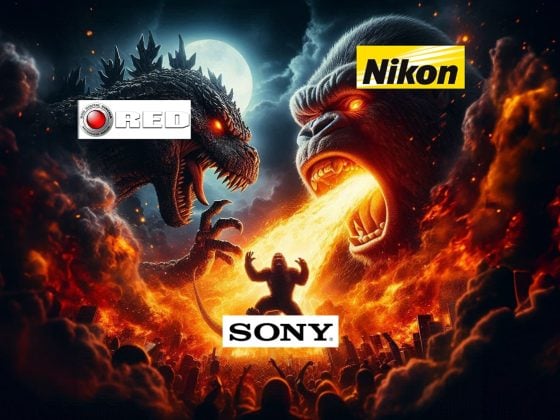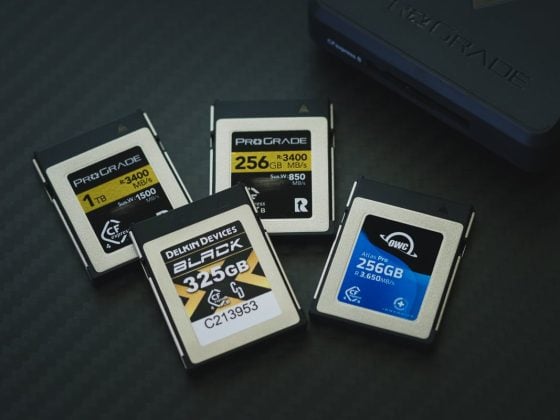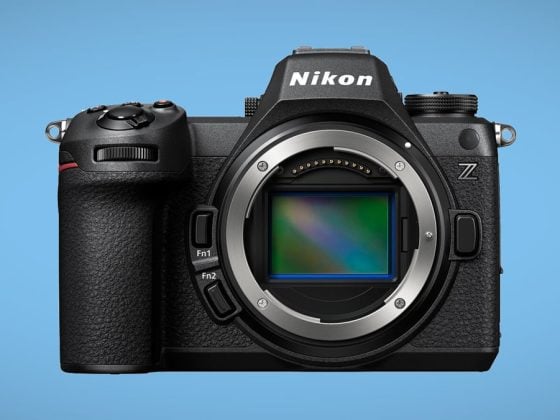
As someone that has owned the A7r, the A7rII, and the A7rIII I was really excited about the potential for what Sony could do with the A7rIV. There is a lot of cool tech out there and a lot of cool implementation of that tech we’ve seen in other cameras.
For example, the Fujifilm GFX100 with the rear screen on the grip or the customizable top display. The Canon with their touch-sensitive touch bar and flippy screen. The Panasonic S1R with the XQD and UHS-II memory card support and the Nikon Z7 with the massive 3.2″ screen with 2 million dots with really good IBIS.
As a leader in innovation, I was really expecting and anticipating Sony to bring something new to the table, some new designs, new interfaces, and new experiences to at least match the competition or hopefully leapfrog it.
But what does Sony do?
They go back to the 2012 trend and try to restart the megapixel war with a 61MP sensor wrapped in a now outdated body. They introduce dual UHS-II memory cards (something that should have been in the A7rIII), and then they build a new mic that you can buy. That’s it. I guess 15-stops of dynamic range is cool, however, it’s 2019, there are plenty of YouTube videos out there that can teach you how to correctly expose for your shadows.
There are a few other little improvements that you would just expect with any camera via firmware, like eye AF for video, but for the most part, the camera is extremely boring and still far behind the competition in terms of the overall design.
For the most part, this is an extremely lazy update and fingers crossed, we don’t get this same treatment with the A7IV and A7sIII.
What Sony Needed To Do
You probably think I’m insane for saying Sony mirrorless cameras are behind after being bombarded by Sony propaganda for the last few years, but they really are. They are very overrated compared to the competition, and the only thing they have going for them is eye AF. Which everyone has now figured out and in my opinion, Nikon is now doing it better, simply because of superior implementation.
Yeah, maybe the Sony AF is 2% more accurate, which I’m not finding to be relevant. I own a Z6 and A7rIII and have a lot of experience with both now.
The Nikon Z cameras are better pretty much across the board, the Panasonic S1 cameras are better with most things, even the Canon EOS R is better at many things.
Here is a list of what Sony needs just to compete
I was really expecting Sony to at least hit half of these in the A7rIV, but what did they do instead? Slapped in more megapixels and stole a mic from another department and for whatever reason paired it with the launch. It’s really the laziest update I’ve ever seen.
Actually, the mic was the coolest thing about the launch of the A7rIV. They should have made it primarily about the mic, and then said, oh btw, here is an overpriced mediocre camera to go with it, if you want.
Anyway, here is a huge list of Sony shortcomings.
Better IBIS to match Nikon / Panasonic – Sony IBIS is currently the worst on the market.
A better screen to match, Canon, Panasonic, and especially Nikon. – The A7III and A7rIII is 3.0″ compared to Nikon 3.2″ and 2million dots. A7III is about 900k A7rIII is about 1.5million dot.
Faster Memory Cards – I’m not sure how I feel about XQD vs UHS-II. There is a convenience of having smaller UHS-II cards and they are pretty quick, but XQD and CFExpress offer so much more. I’ve just had too many SD cards fall apart but those Sony Tough cards are really nice. I give them a pass on this and I am ok with them sticking with UHS-II if it allows them to keep their cameras compact.
Better implementation of Eye AF – Currently you have almost no control of your eye and face detect autofocus. They need to implement some of what Fujifilm and especially Nikon have done by allowing you to switch between eyes, or tap to switch between eyes and faces. Nikon and Canon also give you the option to quickly engage a tracking mode if the Eye AF isn’t working like in situations where you’re shooting large crowds.
Top Screen – What Fujifilm has done with the top screen on the GFX100 is amazing. Sony needs to consider this type of tech in their cameras. A top screen is a nice feature, of course, not game-changing and maybe not for everyone, but it’s nice.
Proper Touch Screen Implementation – Like in the menus.
A better quality screen that doesn’t delaminate if you don’t use a screen protector.
Higher bitrate video – give us H.265 and more than 100Mbps if you’re going to do 4k. Even the EOS R does 400Mbps with its pathetic 4k.
Better Native ISO – 64, please.
More buttons and dials that are better designed – See Nikon Z7. They did improve the feel of the buttons though.
Better space between grip and fingers so people with large hands don’t rub their knuckles on the larger lenses. The new design looks like it might help this actually. We’ll see.
More PDAF points or some Dual Pixel Design – To match Canon’s 5655 PDAF points. The A7rIV has only a measly 567.
10-Bit external recording – Nikon is offering RAW 10-bit external recording.
4k60p – You won’t find that here
Wish List
Lossless compressed
16-bit RAW
Programable Bulb Mode – So you can shoot longer than 30 seconds. Fujifilm does this.
Good Thing The Sony A7r IV Did
They Improved their EVF – This is good! They beat Nikon and Canon here! Tied with Panasonic.
10-fps Continuous Burst – beat Panasonic and Nikon by 1 frame.
It’s strange, Sony in their live stream kept saying, we listened, we listened, we listen to you guys. They listened to who? Nobody was asking for 61MP. Everyone was asking for an A7sIII, not an update to a camera everyone already loved.
But most people just wanted quality of life improvements. Things like better ergonomics, better buttons, make the cameras more fun to use, better screen, better IBIS, better menus.
Sony Has Fallen And Now Plays Catchup
For the first time, Sony plays catchup and it is weird and hopefully not a new trend. I was really hoping Sony would leapfrog everyone else, instead, they just sidestepped everyone else and it still feels like they are behind.
Right now Sony is surrounded and strangled by the competition which is why they had to release this camera. Possibly rushed it. They had to respond to Fujifilm who keeps murdering with their high megapixel cameras.
First the 50MP GFX50s, then the 50MP 50R, now you have the GFX100. Panasonic releases their 47MP full-frame mirrorless beast, mind you, with no banding. Nikon releases their 45MP full-frame beast even Canon has a 50MP beast, albeit, a dated beast. What did Sony have? A humble little 42MP 4-year-old sensor that’s been overclocked to shoot continuous 14-bit raw so as to catch up to the Canon 5Dsr that was 2.5 years ahead of implementing this tech.
So now Sony just thinks, hey look, 61MP we win! Right?
No.
Advancements in sensor tech are showing to be less and less relevant to the mainstream.
61MP Is Not Very Useful In Full Frame
There is a problem with going ultra-high megapixels like this in a full-frame camera.
For one, the file sizes are annoyingly large.
Second, it’s not useful for the people that really need it due to the limitations of physics with this thing called diffraction.
Diffraction Doesn’t Care About Your Megapixel War
If you’re a landscape photographer, and you want to take advantage of the full resolving power of the 61MP sensor, you will have to shoot at somewhere around f4.
As you stop down your lens, you create diffraction which introduces a hard limit on the optical resolution the sensor is able of capturing. In other words, if you stop down to f16, even with that 61MP sensor, you might only have an optical resolution of somewhere around 24MP.
This is why I don’t love shooting landscapes with my Fujifilm X-T3. You’re limited by diffraction and you really can’t shoot an aperture smaller than f8, even that is pushing it and you can see it reducing the resolution of your output. So it’s my street daily life camera, that I almost never shoot over f5.6 with that camera.
I had the same issue with my Panasonic LX100 II where the image would just fall apart if I shot above f4.
This is why medium format is great. You can have larger pixels with a higher megapixel count so that you can still resolve high detail even at smaller apertures.
This is also why I roll my eyes every time I see those big Youtubers compare something like a Nikon D850 to a Fujifilm GFX50. Yes, they are similar megapixels, but the GFX50 has way more resolving power because you can still get great detail at smaller apertures which also helps clean up any lens anomalies.
As you probably know, lenses usually get sharper as you stop down but when you introduce diffraction, there ends up being a limit to that performance. This is why larger sensor cameras often just look better with detail. Because you get to stop down your glass, which improves the optical output, and the sensor can take it.
But this isn’t a lesson on diffraction.
Who Is The A7rIV For?
So now that I spent 1,500 words trashing the thing based on my personal disappointment with it, not all is bad and it has some really cool features that will open it up to a whole new market of professional photographers.
Not Landscape or Architecture Photographers
I would rule out this camera as being useful for landscape photographers unless they primarily shot astrophotography and the only reason I say that is because you can now get such great deals on the A7rIII or the Nikon Z7 that it would be dumb to buy this thing for landscape photography. Especially considering the consequences of stopping down your aperture. Basically, it’s a waste of money.
I’m just not sure you’ll be getting more detail at f11 or even f8 with this new sensor compared to the previous 42MP sensor. Or if there is a difference, it might only be very marginal so I personally will not be upgrading.
Also, the low resolution smaller screen really puts the camera behind the Z7. Have the 3.2″ screen with the 2 million dot display really makes composing and reviewing shots on the Z7 a better experience. Especially if you consider that a lot of landscape photographers like to manually focus.
It’s a shame that Sony A7rIV is capable of all this resolution, but you can’t even see it because they keep using that same terribly outdated LCD screen from five years ago. Good luck using manual lenses.
I get why they do it, I fully understand. It’s another Sony gimmick, Sony smoke & mirrors. Having almost half the pixels as the competition allows them to display the focus tracking box at a faster refresh rate giving the illusion of “stickier” focus. But it’s just a GUI and not at all representative of actual autofocus performance. But still, when YouTubers go online and put these cameras side by side, the Sony looks like it’s doing a better job.
I could be wrong here because AF still looks good even in my EVF on my A7rIII, but I can’t figure out any other reason why they refuse to use nice screens in their cameras other than a bigger better screen would eat some of the processing power and battery life. Sony really relies on specs to sell cameras.
Now the cool stuff
The Sony IV introduces 10 fps continuous burst shooting. This opens the camera up to a whole new batch of professionals.
Sports / Wildlife Photography
This will now totally work for most sports photographers and even a lot of wildlife photographers. If the Sony A7rIV really matches the Sony A9 autofocus tracking like they say it does, that could be game-changing for sports shooters who are shooting at those faster apertures like f4.
I’ve seen many pro sports photographers say they don’t like shooting faster than 10fps, some say they like more, but it really depends on the sport. So this camera is for them.
Think of the cropping power you will have with 61MP. You could crop down to APS-C and still have 26MP to work with so you could easily recover fast-action moments that were maybe sloppily composed. If you were shooting something like professional football or soccer, you could potentially pull out multiple photos from a single image. That’s extremely cool.
Of course, nobody is saying you can’t do this with a Z7 or a Panasonic S1R, you can.
You no longer need to own a second APS-C camera for better “reach.”
With shooting sports, I could totally forgive Sony for having a crappy screen, because sports photographers seem to live in the EVF and they don’t have time to sit there and check their rear LCD screen all the time.
So I don’t want to say a 61MP is all bad. It’s great for professionals that don’t shoot stopped down and 10fps is more than enough for many different types of sports and wildlife shooters. So this could be game-changing for them.
Studio Photographers
Studio photographers who tether will also love it because they often review their photos on professional external monitors or retina display especially since they upgraded the WiFi. They often are shooting at faster apertures and usually don’t stop down much more than f5.6 anyway, so they will see the resolution of the 61MP sensor.
Personally, if I was a pro studio photographer, I would go GFX just for the medium format look, that medium format compression. Being able to use longer lenses while closer to your subject. But that’s just me.
Conclusions
Sony pumped out another pretty cool sensor but let’s be honest with ourselves, the shell surrounded that sensor kind of sucks and I imagine a lot of pros that don’t fit the full-frame 61MP niche will return back to Canon and Nikon as they continue to show the world what thought out well-designed cameras look like.
People are beginning to wake up to the fact that cameras are more than sensors and that most of the sensors in the cameras today are good enough. It’s now a game of processing power, display, user interface, and ergonomics, and it just doesn’t seem like Sony is ready to take on those challenges.
It’s possible that we are now seeing the limitations of what Sony can do with camera design. Maybe they really are just a sensor company that is only capable of producing roided out sensors wrapping with poorly designed, rushed out bodies.
Now I know how Canon fans feel when Canon keeps delivering cameras with specs and features nobody is asking for.
To learn more about the Sony A7 IV check out BHphoto’s announcement.
| **This website contains affiliate links. We will earn a small commission on purchases made through these links. Some of the links used in these articles will direct you to Amazon. As an Amazon Associate, I earn from qualifying purchases. |






